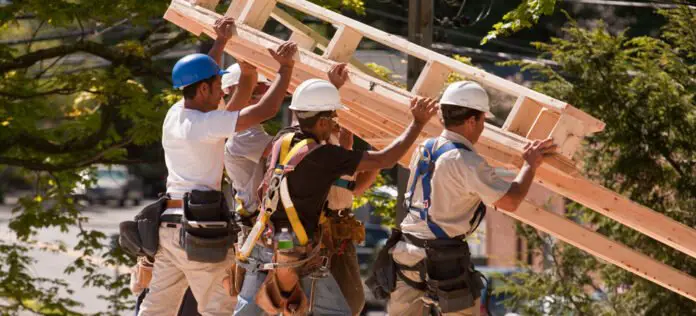Staff Reporter
U.S. homebuilders are facing a challenging start to the spring selling season as high mortgage rates and uncertainty over tariffs create headwinds.
On Monday, KB Home (KBH) announced a 17% decline in net orders compared to the same period last year for its fiscal first quarter ending February 28. The company has also adjusted its average selling price forecast for 2025, lowering it to a range of $480,000 to $495,000, down from the previous range of $488,000 to $498,000.
“While the long-term outlook for the housing market remains positive—driven by demographic trends and a shortage of available homes—demand has been more subdued at the start of this spring selling season than we’ve seen in recent years,” said KB Home CEO Jeffrey Mezger during an earnings call with analysts and investors.
Many real estate professionals view Super Bowl weekend, which took place on February 8-9 this year, as the unofficial beginning of the peak homebuying and selling season, which typically runs through early June.
Mezger acknowledged that the company generally sees an increase in net orders in late January and early February. This year, however, that surge did not occur, reflecting buyers’ hesitance to enter the market.
“If builders can identify the right levers to improve affordability, there is demand, but the process won’t be as straightforward as it has been in the past,” said Jay McCanless, senior vice president of equity research at Wedbush Securities.
KB Home isn’t alone in facing challenges this spring. Lennar, the second-largest homebuilder in the U.S., reported a modest 1% increase in net new orders compared to last year, totaling 18,355. However, the company anticipates lower-than-expected quarterly orders due to the difficult housing market conditions.
“During the quarter, as we move past early February, we’re not seeing the seasonal uptick typically associated with the start of the spring selling season,” said Lennar CEO Jonathan Jaffe during an earnings call with analysts and investors.
Evercore ISI has indicated that Lennar’s approach to maintaining incentive volume may lead to profitability at “dramatically depressed levels,” according to analyst Kim.
To tackle affordability issues, builders may need to rethink home sizes, limit available options, or “find other ways to reduce prices,” said Jay McCanless. For instance, they could replace larger home designs with smaller alternatives, such as swapping 2,500-2,600-square-foot plans for 1,700-1,800-square-foot models.
“At this point, to boost demand without sacrificing profit margins, we’re likely looking at a need for lower mortgage rates or for consumers to regain confidence in the overall economy and their job security—factors largely beyond the control of builders,” noted Trevor Allinson, director and senior research analyst at Wolfe Research.

